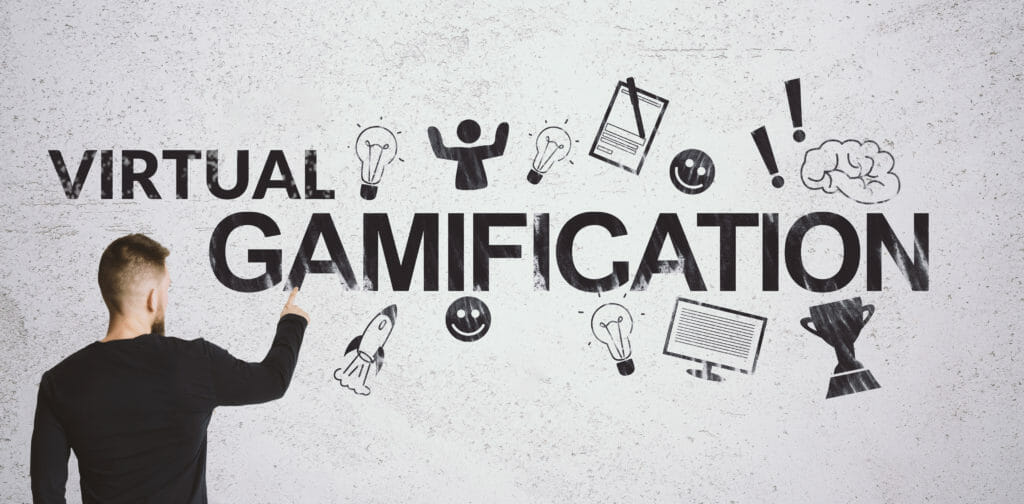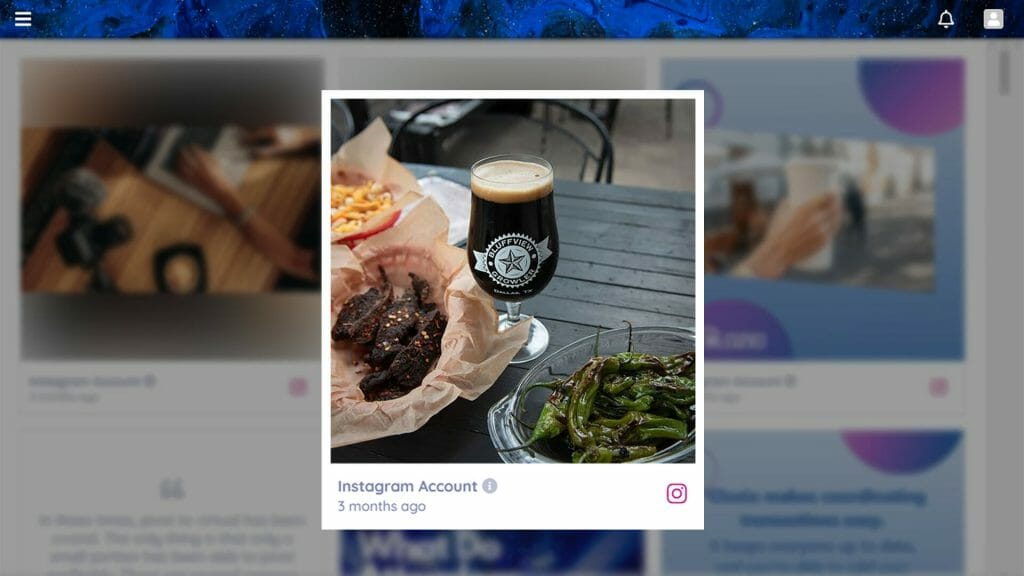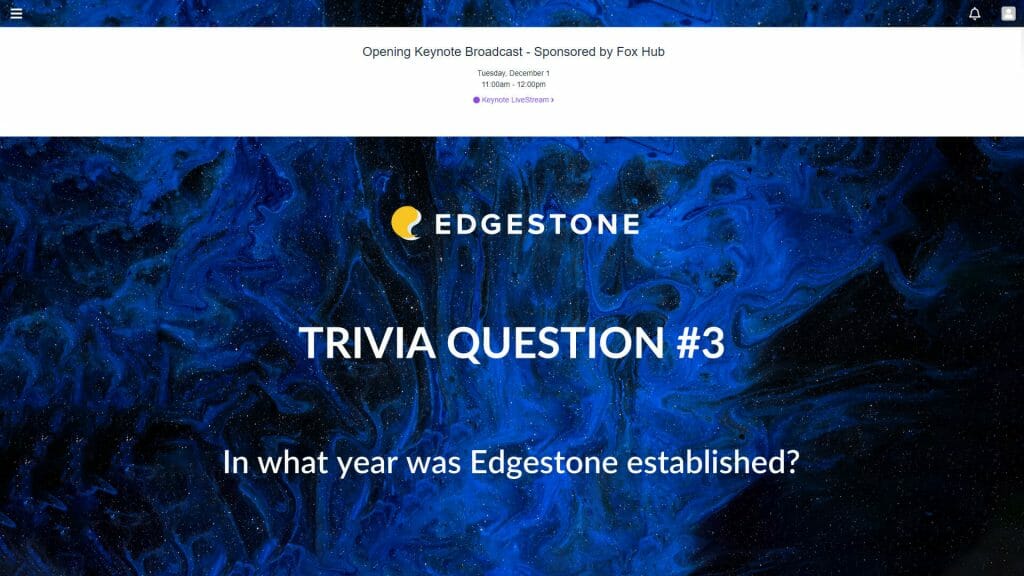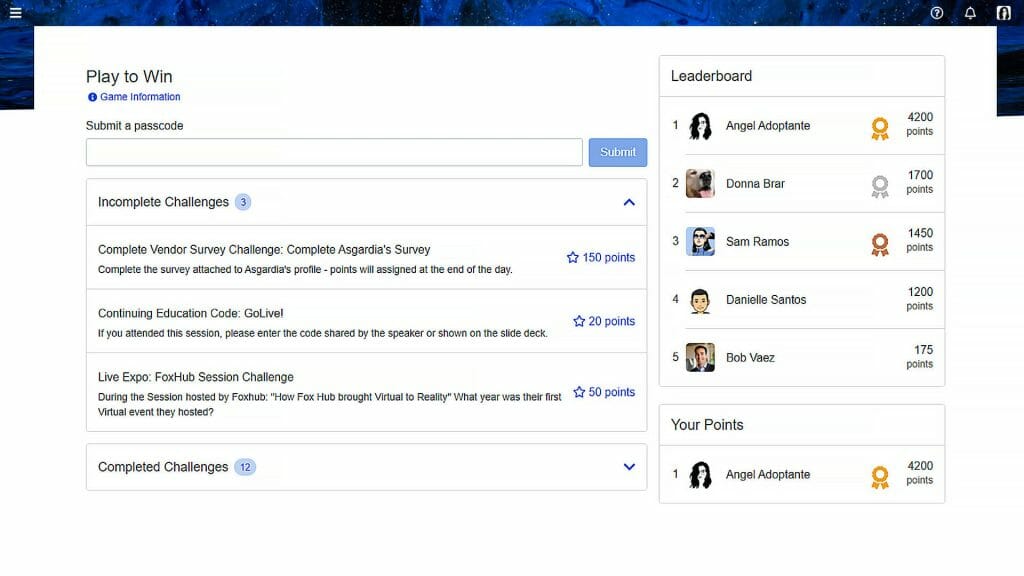The Event Planner’s Guide to Gamification for Virtual Conferences

There are a lot of tips about event gamification online, but most of them are targeted at live events. In this guide, we explain how gamification can be used on your virtual event platform to drive three key event goals.
A pre-pandemic survey by the International Association of Exhibitions and Events (IAEE) identified the top three drivers of live event attendance. Educational content held the top spot, with the event’s destination and its networking opportunities following close behind. But how can these incentives be leveraged in the context of a virtual event? The answer may lie with gamification.
Gamification is a key motivator for attendee engagement. Not only does it reward and acknowledge an attendee’s participation efforts, but it also provides them with a structured framework for event optimization. A virtual event game should chart a path that allows attendees to track their progress in achieving the event’s goals. This means assigning points for learning valuable information or making new professional contacts.
When managed effectively, virtual events can even generate a sense of connection with destinations across the globe.
To maximize your attendees’ sense of accomplishment, you should assign points based on meaningful engagement with the event program. Ideally, a well-designed gamification plan should reflect and amplify the event’s goals — from both the attendees’ and the event organizer’s perspectives. This means awarding points for:
- Participation in networking activities
- Absorption of key information in video content and other educational materials
- Interaction with event sponsors and exhibitors, which should serve both networking and educational goals simultaneously
Using EventMobi’s virtual conference platform as a model, this guide provides practical tips on how event planners can use gamification to boost engagement along each of these three key metrics.
Gamification as an Icebreaker for Virtual Networking
Many event organizers believe that the biggest challenge for digital events comes from trying to match the networking potential of in-person gatherings. The Global Recovery Report, a survey of over 9,000 exhibitors and exhibition visitors conducted earlier this year, found that the most commonly cited downside of live-event cancellations was the loss of networking opportunities.
One advantage that virtual events have, however, is that gamification can easily be integrated with networking goals. All event activities happen under one platform. That means a tiered number of points can automatically be assigned for escalating stages of networking. For example, you could assign 5 points for visiting a profile, 15 points for sending a direct message, and 50 points for setting up a virtual meeting. As an added incentive, you can combine each of these stages with playful activities that help to break the ice.
Use Attendee Profiles to Combine Gamification and Networking
The personal profile section of a virtual platform allows attendees to learn a little more about a potential contact before reaching out. Leading up to the event, you can give attendees points for filling out their bio sections. The more professional details they provide, the more points they get. You can even add bonus marks for uploading a headshot.
EventMobi has had success in encouraging face-to-face interactions at live events by including a personalized code on the back of attendee badges. That gives attendees a simple way to introduce themselves — they can simply ask for the other participant’s personal code. In turn, this exchange translates to more points in the event game. It’s also easy to apply the same principle in a virtual context. Simply include the code at the bottom of each profile, or ask attendees to request it through a direct message.
The event game’s leaderboard can provide another incentive to participate in challenges. Besides being able to see where they rank in real-time, attendees can click on any one of the names displayed to visit the corresponding profile. This allows them to learn more about some of the most active networkers. Alternatively, they could set up a meeting with someone further down on the list to give each other a mutual point boost.
Integrate Icebreaker Games Into Your Virtual Event Platform
To add further potential for personalization and icebreaker activities, the registration process can include a series of personal questions. Aim for questions that typically elicit one-word answers. Examples include:
- Where were you born?
- Do you own a pet?
- What’s your favourite season of the year?
By asking these kinds of questions, you create the possibility for two point-based networking activities:
- You can include each attendee’s answers on their profile page, with other attendees awarded points for correctly inputting the information after visiting the profile.
- You can keep the information private and prompt attendees to find out the answers by direct-messaging other event participants.
When considering this kind of system, event organizers should look for a full-service option like EventMobi’s virtual conference platform. Its integrated gamification, direct messaging, and 1:1 video chat capability ensure a streamlined attendee experience.
As shown in this GIF, attendees can win gamification points by setting up 1:1 video chat meetings with just a few clicks.
Use Photo Challenges and Contests to Encourage Connectivity
While not a full replacement for the experience of meeting face-to-face, the visual appeal of photos can go a long way to making attendees feel more connected. As an added bonus, they can also help to extend your event’s audience on social media.
If you want to combine networking goals with a fun photo-based activity, award points for uploading a screenshot of 1:1 video meetings on the event platform. Add extra points for sharing the image on social media with the event hashtag. The photo with the most likes or reshares could even win a grand prize.
Although virtual events don’t have the benefit of giving attendees a tangible connection to the event’s host city, the geographic spread of your remote attendees can actually be used to advantage. Each attendee has the potential to give others a glimpse into their immediate locale. With this in mind, event organizers can encourage sharing through photo challenges. For example, you can give attendees points for posting photos that draw connections between their home region and the event theme. Take it a step further by awarding points for commenting on the photos.
On the EventMobi platform, this kind of activity could be set up in two different ways:
- Attendees can share photos on social media with the event hashtag, and the posts will automatically be captured on the virtual platform’s live social media wall.

- Attendees can share photos on a dedicated Group Discussion created by the event organizer.
Gamification as a Tool for Retaining Your Livestream Audience
Virtual events mean that it has never been easier to reach a wide spectrum of potential attendees. But by the same token, it is harder than ever to retain their attention. Attendees can tune out just as easily as they can tune in. Event planners need to use every tool at their disposal to keep their audience from losing focus.
Once again, gamification can be a great motivator. Attendees can receive points simply for watching sessions, but you can take the principle of gamification a step further with more interactivity.
For example, trivia games not only encourage attendees to seek out and retain information, but they also provide participants with a measurable way to track how much they’ve learned. Good event gamification is not about giving attendees a novel distraction. It’s about turning active event participation into a form of play.
Bring Gamification to Video Content with Strategic Trivia Clues
Any trivia games or quizzes added to an event’s virtual platform should relate back to its programming, or to exhibitor and sponsor content.
There are two key habits that event planners want to discourage when it comes to livestreamed sessions: arriving late and leaving early. One strategy is to announce that key trivia answers will be revealed at the beginning or end of a video session. That way, attendees will have an added incentive to tune in early and stay until the end.

Be creative with the quiz format. Combine personal details about event speakers with core product information. Alternatively, consider using a mixture of text and image-based prompts. For example, can participants correctly identify a product that was demoed based on a photo of it in use?
How Gamification Drives ROI for Event Sponsors and Exhibitors
Virtual event platforms provide multiple opportunities to promote both sponsors and exhibitors through gamification. Each of the tactics listed above can translate to measurable ROI. Additionally, scavenger hunts are another good option for driving traffic and conversions.
On the networking side, attendees can be awarded points for visiting virtual exhibitor and sponsor booths or messaging them. Assign a larger number of points for setting up virtual meetings, whether for 1:1 demos or other business discussions. Similarly, you can assign points for watching exhibitor and sponsor content, with extra points allotted for correctly answering questions about the material covered.
Stagger Gamification Points to Match Sponsor Investments
The number of points connected with each activity should be in direct proportion to sponsor investments. For example, a visit to a Gold Sponsor booth might result in 100 points, while a visit to Silver Sponsor might bring 75.

Sponsors and exhibitors should also be given some input into the design of the activity. Do they want to ask trivia questions related to product information, or do they want to add a personal touch by asking about a fun fact on their CEO’s bio?
Use Scavenger Hunts to Deliver Leads
Finally, scavenger hunts can be an effective way to drive further traffic to exhibitor and sponsor pages on your virtual event platform.
One option is to display a personalized code on the sponsor or exhibitor page, within a demo video, or at the end of promotional content. Another strategy is to allow sponsors or exhibitors to share the code in personal 1:1 video chats. This approach increases the opportunity for interaction and meaningful lead development.

Key Takeaways
For virtual events to deliver the same key values that attendees have come to expect from in-person experiences, they will have to play on the unique advantages of digital platforms. Trying to replicate the live experience will always fall short — virtual connections will never allow for the sense of familiarity that comes from meeting in person. On the other hand, digital events are a natural fit with gamification.
EventMobi’s event platform includes a fully integrated gamification system. You can assign points to any number of activities within the platform. Further, a leaderboard displays attendee rankings in real time, and the interface makes it easy for attendees to follow the game’s prompts and instructions. For example, once an attendee has found another participant’s profile, the platform’s design makes it easy to complete the next step of sending a direct message. With just a few more clicks, they can set up a video chat.
For a virtual event’s game to be effective, both the accumulation of points and the process for earning them should be streamlined and intuitive.
Generally speaking, the more experience that a platform has with gamification features, the more refined the product will be. EventMobi has been incorporating gamification into its event platform for years. Its previous publications on the subject include a comprehensive overview of game theory in The Ultimate Guide to Event Gamification, as well as a series of practical tips for live events with The Gamification Pocket Guide.